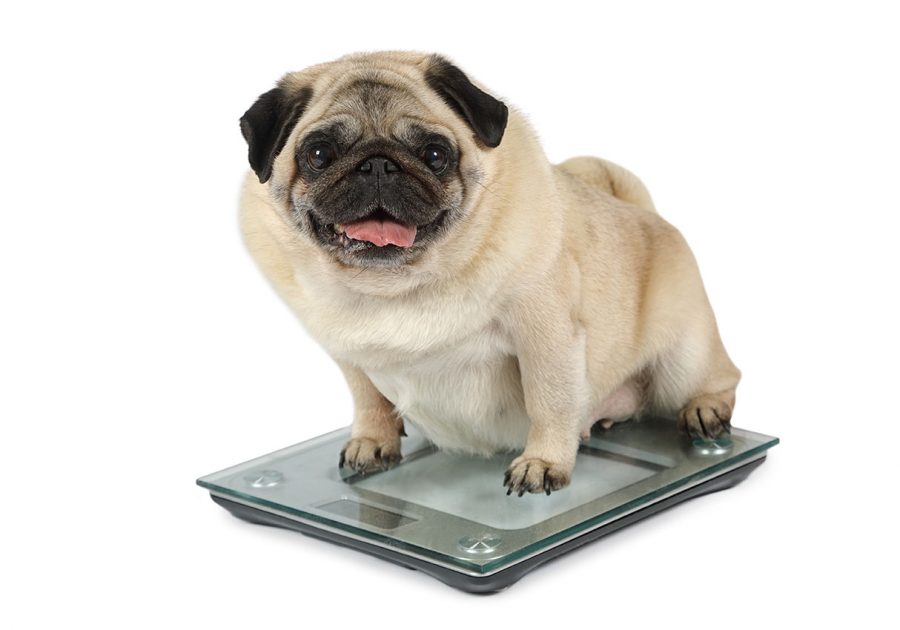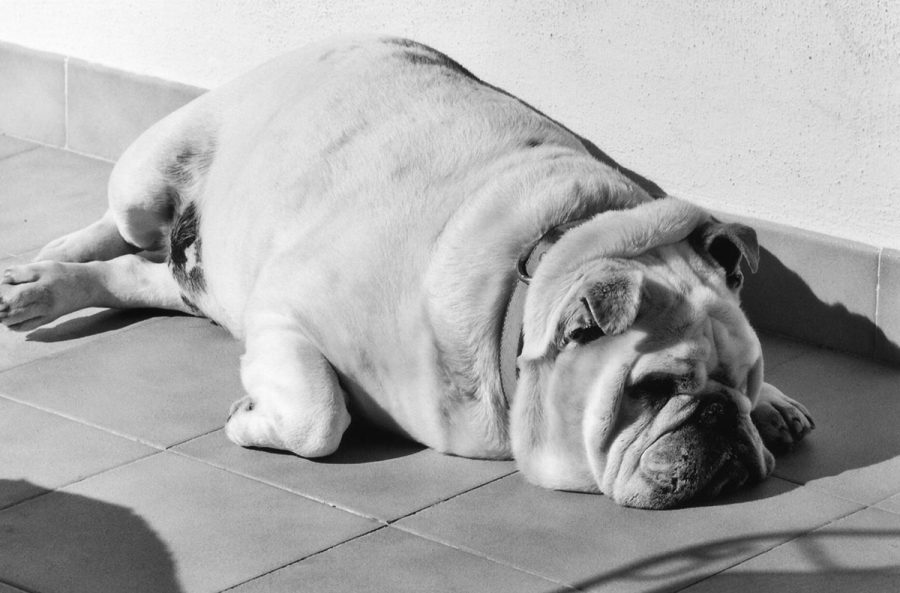If your dog is fat, it means it is overweight or obese.
Firstly, do not panic: you should know that obesity, that is the accumulation of excessive amounts of adipose tissue in the body, is the most common nutritional disorder in pets. It affects up to 40% of companion dogs.
But, above all, you should know that, with the right precautions, it can be remedied.
Obesity usually results from excessive food intake or inadequate energy utilisation. In other words: if your dog weights too much, this may be due the energy content of its diet being excessively high, or to the dog not exercising enough. In quantitative terms, a dog is considered obese if more than 15% above their optimal body weight, which, in turn, depends on various factors, including breed, size, and age.

Is it true that Labrador retrievers have a tendency to gain weight?
Yes, the Labrador retriever breed is associated with an increased risk of obesity. But breed is not the only factor affecting the odds of a dog being overweight/obese. Other known risk factors are female sex and neutering.
Obesity has consequences for a dog’s health
It is very important that your dog stays fit, as obesity can have harmful effects on their health. An overweight dog has increased likelihood of developing orthopaedic, cardiorespiratory or dermatological diseases, diabetes, reproductive disorders and tumours, and therefore of having a shorter life than others.
What can you do if you have an overweight or obese dog?
1) bring your dog to a veterinary nutritionist, who will examine them, evaluate their body condition score (BCS), a reliable indicator of obesity based on measuring the amount of body fat, and then will tell you how to properly adjust their diet
2) avoid giving your dog snacks between meals and always give them the daily ration by dividing it into two or more meals a day, instead of just one
3) make your dog do more physical activity, for example by increasing the duration or frequency of your walks, increasing play sessions, and, if there are no problems with other dogs, making him/her spend more time in the dog area. Moreover, there are many dog sports you can do together to keep both of you fit and happy. To learn more, click here.
4) have your dog wear the Kippy activity tracker on the collar or harness. Kippy is an activity tracker which, thanks to a very sophisticated algorithm, is able to monitor your dog’s motor activity and send you personalised messages and tips for your dog’s well-being.

Thanks to the Kippy activity tracker you can view a summary of all the motor activities carried out by your dog, such as playing, walking and running, the number of steps and calorie consumption. Kippy allows you to monitor the progress of your dog’s physical activity compared to other dogs that similar for weight, age and breed. In addition, it enables you to check weekly and monthly progress, so you can easily adjust physical activity levels to keep your dog always healthy, happy, and in shape!
Federica Pirrone, Mariangela Albertini, Patrizia Piotti researchers at UNIMI Veterinaria
